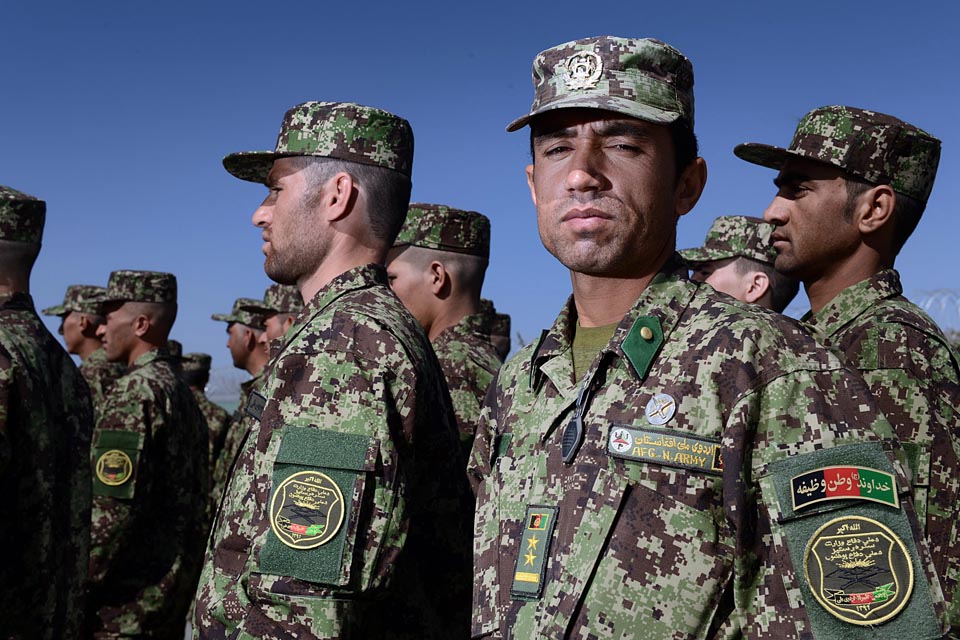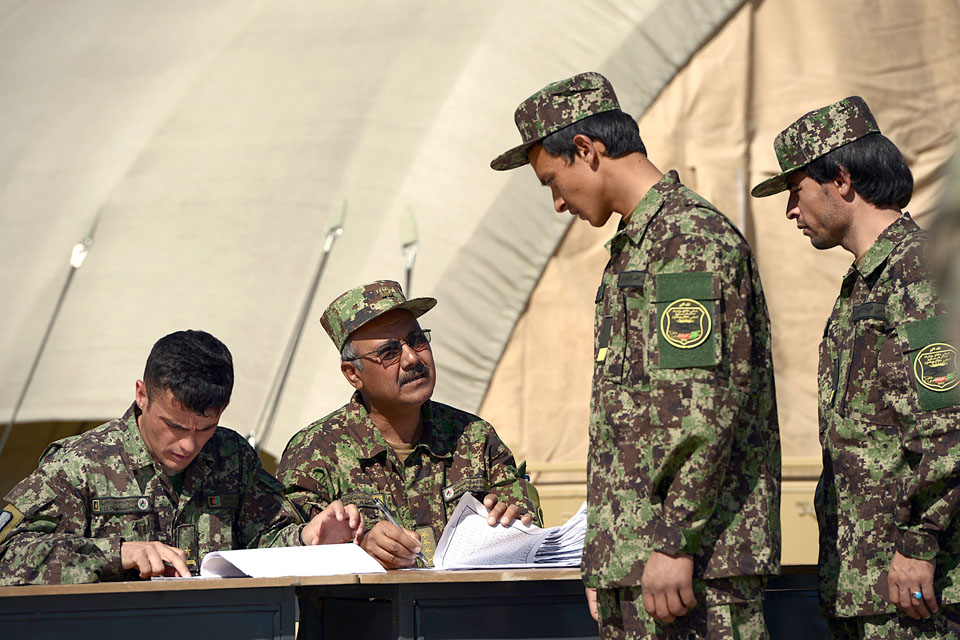Afghan army officer academy welcomes first intake
Hundreds of new recruits have begun training at the new Afghan National Army Officer Academy (ANAOA) in Kabul, Afghanistan.
![Afghan Defence Minister Bismillah Mohammadi (left) shakes hands with UK Defence Secretary Philip Hammond [Picture: Crown copyright]](https://assets.publishing.service.gov.uk/media/5a60d7f6e5274a44418115fc/s300_DSC01402.JPG)
Bismillah Mohammadi (left) shakes hands with Philip Hammond
More than 270 members of the first kandak, equivalent to a British Army battalion, arrived at the site in Qargha, on the western outskirts of Kabul, and are now progressing through instructional lessons. They are being taught by Afghan platoon commanders and sergeants who have been trained since May by their British counterparts.
The opening of the academy marks a significant step in Britain’s long-term commitment to a stable future for Afghanistan.
The Secretary of State for Defence, Philip Hammond, and the Afghan Defence Minister, His Excellency Bismillah Mohammadi, discussed the ANAOA at the NATO defence ministers meeting today, Wednesday 23 October.
Mr Hammond, who visited Qargha in June, said:
Supported by our allies, the UK is mentoring, assisting and advising Afghan instructors to run courses based around the Royal Military Academy Sandhurst model, designed to teach Afghan National Army (ANA) officers key leadership and tactical skills.
This will help ensure the Afghan officers and those training them will be of the highest quality, helping sustain the progress made in building a capable and professional force during and after the transition of security responsibility to the Afghan government.

A training instructor with officer cadets at the Afghan National Army Officer Academy [Picture: Sergeant Dan Bardsley, Crown copyright]
Mr Mohammadi said:
With the help of the UK our recruits will become familiar with the customs of leadership, gain knowledge of Afghan and wider military affairs, and have developed the core values necessary for future leadership of the ANA: God – integrity and honour; country – service and respect; and duty – courage and loyalty.
The development of these cadets and their continuing professional training will help the Afghan forces to maintain the security of our nation for many years to come. We have established a strong ANA and we need to ensure that we can sustain it in the future.
I look forward to maintaining close relations with His Excellency Mr Hammond as our nations continue with the ANAOA partnership and other areas of force development.
Recruits will spend 42 weeks at the ANAOA, over 3 terms, before graduating in September 2014. Although the training model is based on that used at Sandhurst, emphasis will be placed on generating an Afghan ethos as the Afghan National Security Forces continue to develop.

An officer cadet has his hair cut on day one of his training at the Afghan National Army Officer Academy [Picture: Sergeant Dan Bardsley, Crown copyright]
Brigadier Maurice Sheen, an Army reservist officer who is Commandant Mentor of the ANAOA, said:
This marks the end of a large phase of training and preparation which has been going on for a long time.
It demonstrates the UK’s long-term commitment to Afghanistan and builds on all the training people have done in the past from the UK. It will produce the young leaders that the Afghan National Army so thoroughly deserves.
Brigadier General Muhammad Sharif Sharifi, Commandant of the ANAOA, said:
This is a momentous opportunity for the ANA. We will have the chance to train an entire generation of future Afghan warriors who will be excellent leaders and who will serve their country with distinction.
Thousands more recruits will train at the ANAOA following this first wave. Meanwhile British mentors, working with coalition partners from Australia, New Zealand, Denmark and Norway, will continue to train the Afghans so they can take an ever larger instructional role.

An officer cadet has his details checked during enrolment at the Afghan National Army Officer Academy [Picture: Sergeant Dan Bardsley, Crown copyright]
Lieutenant Colonel Grahame Hyland, who mentored the first kandak commander, said:
For the cadets who’ve started here it has already been an achievement. More than 10,000 Afghans applied for this course initially, and importantly they came for selection wearing a number so there would be no favouritism linked to family connections.
It sounds slightly twee but it really made me smile to see these first recruits arrive and to see them going through their first lessons.
There are currently 42 mentors from the UK, Australia, New Zealand, Denmark and Norway involved with the ANAOA. This number is expected to rise to around 120 by spring 2014.
In 2016 the UK’s role is due to move from mentoring to advising, when overall mentor numbers are due to reduce.